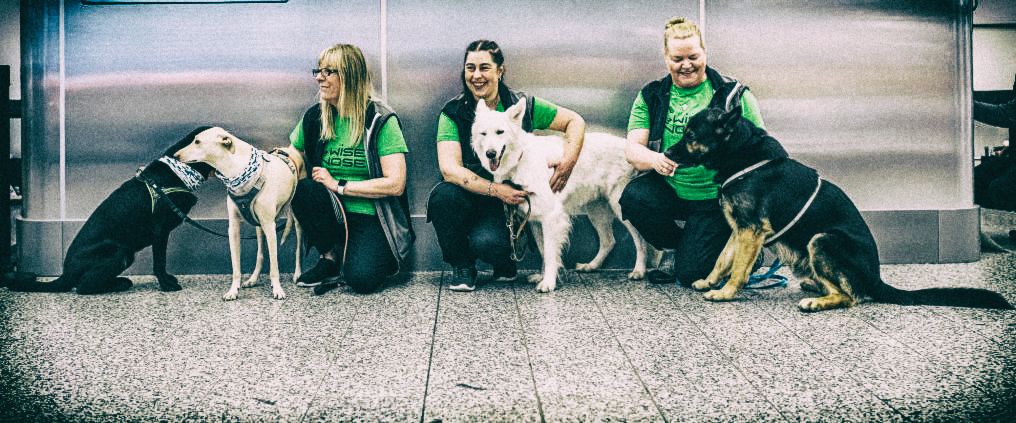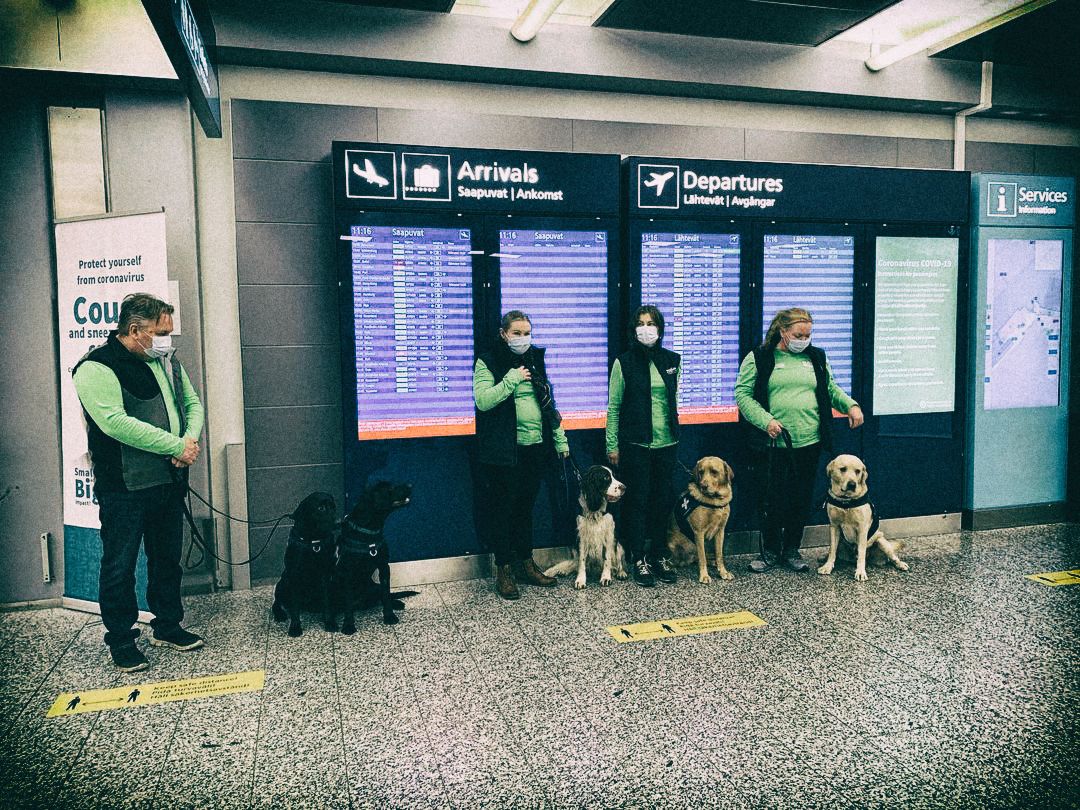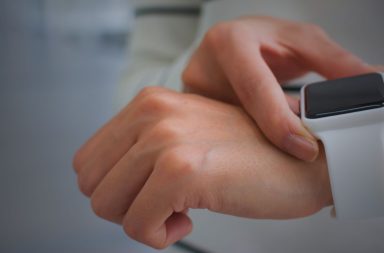Finland is using Covid-sniffing dogs as a complementary testing measure for international passengers arriving to the airport of Helsinki-Vantaa. The first official results of the pilot project will be revealed at the beginning of 2021.
If you are coming to Helsinki from abroad by plane these days, you will be welcomed not only by the airport crew, but also the four-legged guardians: Finland is running a pilot program using dogs to detect passengers infected with Covid-19.
Different countries are performing research on the coronavirus-sniffing dogs, whose sharp noses have already made the headlines on Time, BBC and other media. However, Finland is the first in Europe to get to the actual trials at the airport: the project started at Helsinki-Vantaa airport at the end of September 2020, following Dubai International Airport that came up with the same innovation this summer.
The Finnish sniffing dogs working are trained by Wise Nose, Finland’s Smell Detection Association and Nose Academy, a start-up company responsible for operational activities at the airport. The research part is led by Anna Hielm-Bjorkman, Adjunct Professor of clinical research on companion animals at the University of Helsinki.

Digital Health Global talked to Soile Turunen, Project Planner at Nose Academy Oy, to shed some light (or sniff out the truth?) on the initiative.
Soile, behind every project there is a story. Could you share one about how it was discovered that dogs can detect Covid? How much time did it take to train the first dogs and to launch the project?
The idea came almost a year ago, in spring 2020 when the pandemic started to spread It belongs to Susanna Paavilainen, Executive Director at Wise Nose, and Anna Hielm-Bjorkman, professor at the Helsinki University.
Susanna is also a dog trainer, so she started to investigate whether her dog, Kössi, could sniff coronavirus. Susanna tried with some of the relatives and it turned out that the dog, in fact, could successfully detect Covid. Finland has been known for the low rates of coronavirus spread, hence it was even difficult to find enough positive samples for the training.
Susanna and Anna, with the support of the City of Vantaa Deputy Mayor, Timo Aronkytö, who found the idea innovative and noted a great potential for the country, started to work on the project mid of summer and managed to launch the dog training by August. Considering we are actively using the dogs now, we can say that the training takes 2-3 months but we need to keep in mind that we are still at a pilot stage, hence we don’t have enough data to estimate this time period in a more precise way.
Is there a specific dog breed that deals with such task better?
Most of the dogs we use have previous history of sniffing diseases – for example, Kössi, the dog of Susanna, was trained to detect cancer samples. In fact, Kössi has a history of his own: he is a mixed breed, he was found as a puppy in Spain and brought to Finland.
In general, any dog is capable of doing this kind of nose work. We have Labrador retrievers, German shepherds and White shepherds. The success of the dog depends more on his or her personality: it’s very important that a dog really enjoys the job! A dog should be enthusiastic about carrying out this kind of tasks. It’s crucial, the same as with people going to their job every day!
After a couple of weeks of training one can usually tell whether a dog would be capable of doing the task. At the moment we have 5 dogs working at a daily basis at the airport with 3 dogs under the training. One more dog is also working at the laboratory because not any dog is capable to do the job in the field – some get distracted with noises and people. We are renting the space at one of the schools in Vantaa where we have rooms for training, sample preparation and storage facilities, and dogs that need more peaceful environment work there.
It has beenclaimed that a dog’s ability to find positive patients is about 94-100 %. Can you already share some results of the pilot project? According to the earlier comments of Timo Aronkytö, less then 1% of passengers at the Helsinki airport turn out to be positive.
First of all, we always note that dogs don’t replace the PCR test, it’s a complementary method with a promising potential to screen people in a fast way.
We are advising all passengers who got tested by the dogs to take a PCR test as well, it is available for free for all foreign arrivals. In such way we can compare the results delivered by the dogs to the PCR results and it is also one of the scientific parts of the project. PCR is considered a gold standard right now, however, we know that it may also give false positive or false negative results – this is the puzzle we need to solve.
Our pilot project with the sniffing dogs was initially scheduled for 4 months, till the end of December 2020, but we already confirmed that we will continue in 2021. Until the official results are published by the beginning of the next year, I am not able to announce any percentage but I can say that in most of the times the results of the dogs are consistent with PCRs and we are very satisfied with the dogs.
It’s true that, luckily, a very slight percentage of arriving passengers is infected – in fact, we even give the dogs extra positive samples to sniff so that dog performs the odor separation between positive and negative ones often enough.
The pilot has been very important for us to figure out main logistics and operations details: how many dogs do we need, how much time can a dog spend at the airport vs the time for rest and so on. For example, we can currently screen around 100 customers per day.
By the way, after having finished the training, our dogs have an ‘internship’ phase at the airport before starting the actual work.
How do people react to the dogs? I can assume that not many are familiar with this project, especially the foreigners.
Everyone loves the dogs! The passengers, the Finavia crew – everyone comes to say hello and take pictures, we even started our Instagram account. I think it’s very important to have these positive and cheerful colleagues at the airport.
Turning to the comments of Timo again: he mentioned the costs of the program being equal to 300 000 euros which is relatively low compared to the cost of deploying other preventive measures against coronavirus. Is the whole project funded by the Finnish government?
Yes, mostly it is supported by the government and the City of Vantaa. was to build the facilities at the airport and employ eight people for this project. Then goes dogs training, and at Wise Nose we have rent, supplies, materials and also training costs for the people who work with the dogs. We take a very good care of the dogs and starting next year we will make sure the dog owners have some resources for physiotherapy and other related costs.
As you can see, the project consists of 3 stakeholders: Wise Nose, which is responsible for the dog training, Nose Academy, where I work, responsible for operations and R&D represented by Anna from the University of Helsinki. Apart from state funding, Wise Nose gets donations from private persons and companies such as Evidensia Veterinary services Ltd. The research team received contribution from the Finnish Kennel Club.
Are you planning to share your experience with other countries considering that Finland is pioneering Europe?
Indeed, we are contacted by many researchers and right now keeping contact with more than 10 countries. I know that France and Germany have done some research in the area, Italy and Spain are also discussing about dog training and usage of the sniffer dog. We are willing to help, however we have quite limited number of people working on this project so we cannot allocate too much time for this experience transfer.
We started thinking on how we can share our takeaways from the pilot project and first, we thought about hosting research groups from other countries that could come for a week or two to Finland when epidemiological situation in Europe gets better. Then, we also came up with the idea to record videos of the training. It could be a scalable option, but the limitation here is that each dog is very individual: you record the training video with the one and then the next dog would be different.



